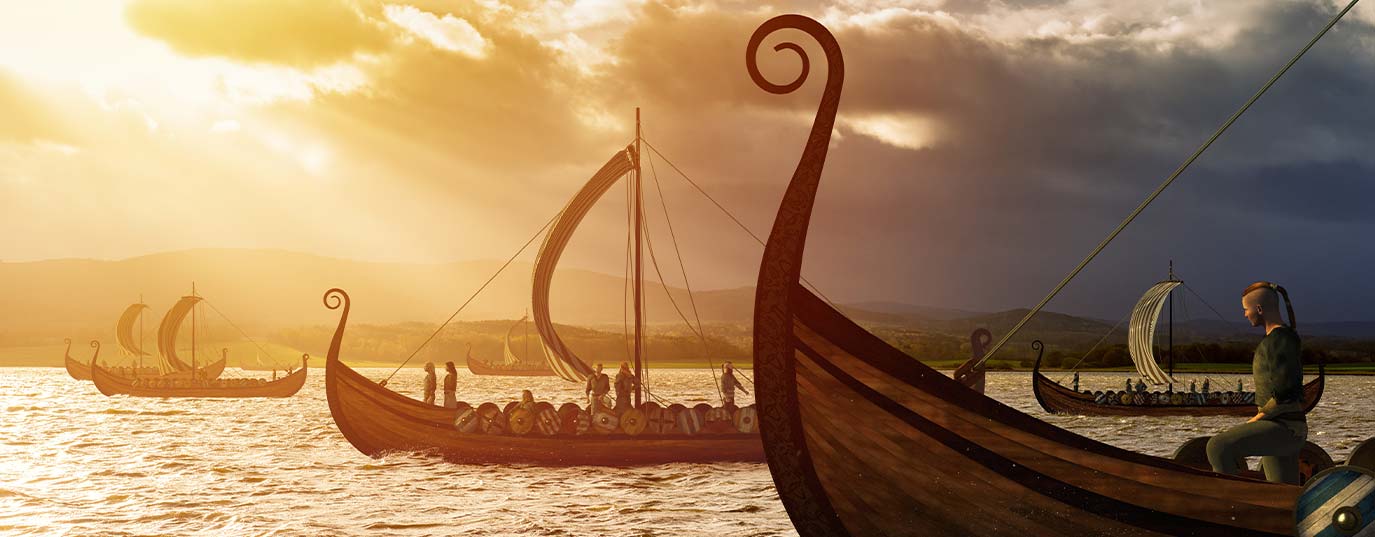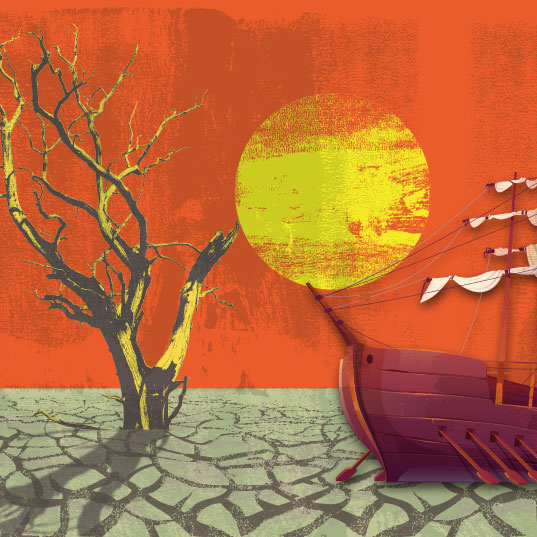Climate history: Why did the Vikings disappear from northern lands?
Was it the cold? Epidemics? None of that. The reason the Vikings disappeared can be explained by climate change.
There’s a theory that Nordic settlements were abandoned due to decreasing temperatures. But the disappearance of the Vikings from those areas had little to do with the cold. The determining factor may be related to climate change, but a very different and little-considered kind: drought.
What will I learn from this article?
- Cause of the end of the Vikings
- Effects of drought on Viking diet
- Climate change transforms the spaces we inhabit
The climatic changes that brought about the end of the Vikings
There was a time centuries ago that settlements in cold northern lands grew little by little with the arrival of new inhabitants. Up to the 15th C., the territory we now know as Greenland reached a population of around 2,000.
From then on, these lands began to depopulate. Early research said the exodus was due to many problems, including climate change, a lack of management, economic collapse and social stratification.
Temperature change has often been cited as an explanation for the end of the Vikings, so let’s take a closer look. According to this theory, the Nordics arrived in the North during a period that was more or less warm, where they could survive until temperatures fell during the Little Ice Age.
Now, new research by the College of Natural Sciences at the University of Massachusetts Amherst concludes that the migratory displacements were not down to the cold. By reconstructing temperature and hydro-climate, the experts found that summers were increasingly warm and dry in Greenland during the time the Nordic settlements were abandoned. Thus, the trigger for the disappearance of the Vikings could have been drought.
“The trigger for the disappearance of the Vikings could have been drought”
Effects of drought on Viking diet
The increasingly arid conditions had a big influence on the viability of the settlements and more impact than small temperature changes. This is the main conclusion from the research, which points to a drier climate significantly reducing land for grazing.
The Greenland climate is not the best for farming animals. According to the scientists’ reconstructions, however, Nordic farms enjoyed favorable weather conditions during the first years of the settlements. Later, increasingly dry conditions limited the production of feed. Less rain meant smaller crop harvests and consequently farmers could not feed their livestock in winter.
Drought influenced the Nordic diet; they were losing their primary food source as climate conditions changed. The Vikings began to eat more seafood as they lost their ability to raise and feed off livestock. Hunting and fishing at sea was riskier and more uncertain, and could be one of the reasons they decided to migrate, according to the Massachusetts team.
Denied adequate farming conditions, inhabitants of the Nordic settlements fled the drought, rising sea levels, and a series of epidemics that spread across the region. Although these changes didn’t happen overnight, they eventually became unsustainable.
Climate change transforms the spaces we inhabit
Many centuries have gone by since these droughts led to the disappearance of the Vikings, but Greenland is facing the problem once again. In 2008, drought in the south of the country caused a 50% decrease in hay and silage output, affecting the whole population.
A lack of rainfall also affected the hay harvest in 2010, 2011, 2012, 2015 and 2019. These were the worst summer droughts in 70 years. Fortunately, despite this situation, animals are no longer in danger of going hungry since hay can be imported. But such imports weren’t possible in the Greenland of the 15th C.
Nevertheless, climate change is still seriously affecting the country. In 2021, the Greenland ice cap lost more mass in summer than it gained in winter, and global warming continues at an alarming pace. Proof of that lies in events like the first-ever recording of rainfall at the Summit weather station at a glacier 3,200 meters high.
Scientific research has never attributed the end of Viking civilization to a single factor, not even climate change. But today, as then, temperature increases will determine the future and survival of civilizations.
Source: https://www.science.org/doi/10.1126/sciadv.abm4346

